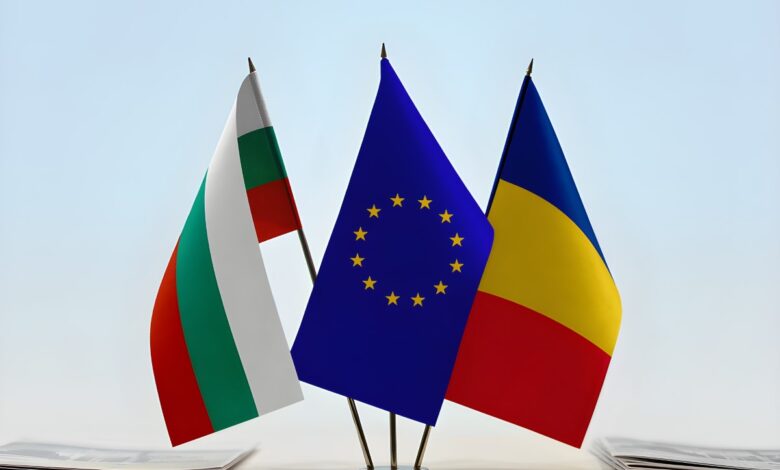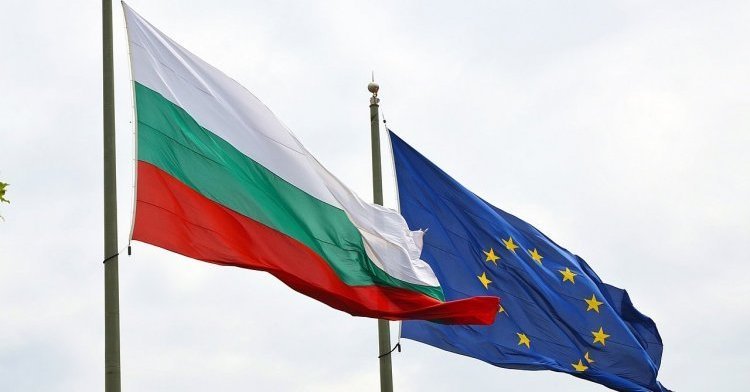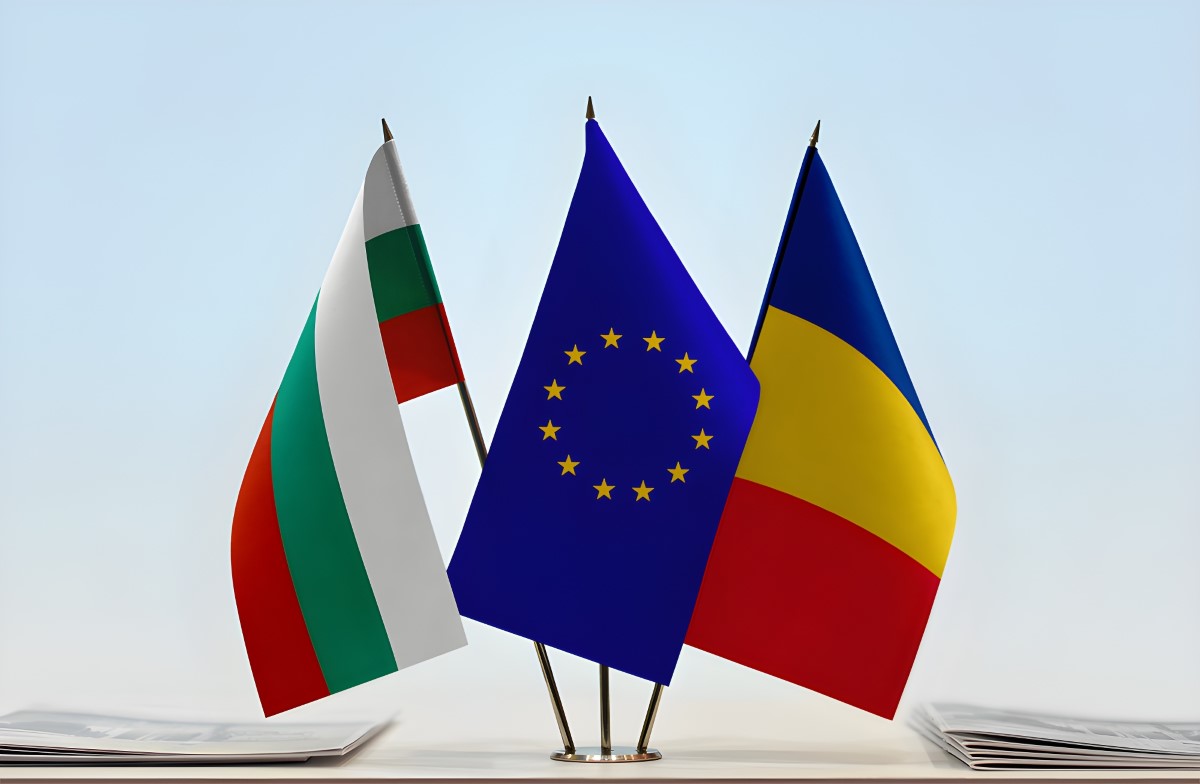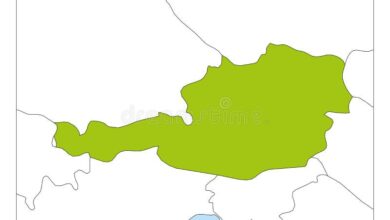
Bulgaria and Romania Join Schengen Area
Bulgaria and Romania join Schengen area, marking a significant step forward in European integration. This momentous occasion promises to reshape the region’s economic landscape, impacting everything from tourism and trade to daily life for citizens. The process, spanning years of negotiations and meticulous preparation, culminates in a new era of seamless travel and enhanced connectivity.
The decision to include Bulgaria and Romania within the Schengen Area reflects a careful evaluation of their preparedness. This comprehensive analysis considers factors like security protocols, economic stability, and social integration, ensuring a smooth transition for all involved parties.
Historical Context of EU Expansion

The European Union’s expansion, a process marked by incremental integration and shared prosperity, has profoundly reshaped the political and economic landscape of Europe. This expansion isn’t simply about adding new members; it reflects evolving geopolitical dynamics, economic interdependence, and the enduring quest for peace and stability across the continent. The inclusion of Bulgaria and Romania into the Schengen Area represents a significant step in this ongoing journey, building upon a foundation of historical cooperation and shared values.The Schengen Area, established in 1985, aimed to progressively dismantle internal border controls between participating European countries.
Its initial members recognized the benefits of frictionless travel and the facilitation of trade and cultural exchange. This initial framework laid the groundwork for the current extensive network of border-free travel across a large swathe of Europe.
Timeline of Bulgaria and Romania’s Application
Bulgaria and Romania formally applied for Schengen Area membership in 2011. Their application followed years of rigorous preparation and demonstrated commitment to aligning their internal security systems and legal frameworks with Schengen standards. This involved substantial domestic reforms, including improvements to border control infrastructure, judicial systems, and law enforcement cooperation.
Key Events and Milestones
A series of key events and milestones shaped the path towards Bulgaria and Romania’s potential inclusion. These included:
- 2011 Application: Bulgaria and Romania officially submitted their applications, marking a significant step toward fulfilling their aspirations for closer integration with the EU.
- Negotiations and Assessments: Extensive negotiations and assessments were conducted by the EU institutions, examining the readiness of both countries to meet Schengen’s stringent requirements. This involved detailed reviews of border control, judicial cooperation, and law enforcement standards.
- Evaluations and Reforms: The process underscored the importance of consistent improvements in internal security and judicial systems within the applicant countries. These efforts involved significant legislative changes and institutional reforms.
- Political Landscape of the Region: During this period, the political landscape in the Balkans and Eastern Europe underwent transformation. The EU’s influence in fostering stability and democracy in the region became increasingly prominent.
Role of the European Union
The European Union played a pivotal role in facilitating this process. The EU’s commitment to enlargement and its efforts to create a more unified and secure Europe provided the framework for this expansion. Furthermore, the EU’s role encompassed:
- Enforcing Standards: The EU ensured that Bulgaria and Romania met the established standards for Schengen membership, emphasizing the importance of upholding common values and security protocols.
- Monitoring Progress: The EU meticulously monitored the progress made by both countries, confirming that the required reforms were being implemented effectively.
- Supporting Reforms: The EU offered support and guidance to the applicant countries in their efforts to meet the necessary criteria for accession.
Political Landscape of the Region
The political landscape of the region during this period was characterized by a variety of factors. The ongoing process of European integration played a significant role, alongside the evolving political dynamics within the EU itself. These dynamics influenced the political climate in the applicant countries, shaping the pace and scope of reforms.
Economic Implications
Bulgaria and Romania’s accession to the Schengen Area promises significant economic benefits, but also presents potential challenges. The integration into the EU’s free movement zone will likely reshape the economies of both nations, impacting tourism, trade, and employment. A careful assessment of the anticipated outcomes is crucial for policymakers and businesses alike to effectively prepare for the changes.
Potential Economic Benefits
The elimination of border controls with other Schengen member states will significantly reduce transaction costs for businesses. Increased trade and investment flows are expected, stimulating economic growth and job creation. The removal of bureaucratic obstacles for businesses, such as customs checks and visa requirements for citizens of Schengen countries, will encourage greater interaction and cooperation. This, in turn, is anticipated to lead to a more competitive and efficient business environment.
Tourism Sector Growth
Bulgaria and Romania are both attractive tourist destinations, with a rich history and diverse landscapes. Joining the Schengen Area is projected to boost tourism from Schengen member states. Easier access for tourists will likely lead to an increase in visitor numbers and revenue for hotels, restaurants, and other tourism-related businesses. The potential for further development of cultural and historical tourism is also significant.
This increased inflow of tourists will necessitate investment in infrastructure, creating jobs in construction, hospitality, and related sectors.
Bulgaria and Romania joining the Schengen area is fantastic news for travelers. It opens up a world of easier travel, and with that comes a shift in the tourism industry. This means more accessible destinations for those seeking affordable all-inclusive resorts, which are increasingly going small, offering a more intimate and personalized experience. All inclusive resorts go small are a great choice for those looking for a unique and refined vacation experience, and the growing availability of this style of resort will be even more attractive in these new, accessible destinations, like Bulgaria and Romania.
Trade Expansion
The abolition of border controls will foster greater trade between Bulgaria and Romania and other Schengen member states. Reduced paperwork and quicker transit times will encourage more cross-border trade, potentially leading to increased exports and imports. This increased trade activity is expected to create new markets for Bulgarian and Romanian products and services. For example, companies specializing in agricultural products, textiles, and crafts could benefit from expanded access to European markets.
Comparison with Other Schengen Member States
A comparison of economic performance between Bulgaria and Romania and other established Schengen members will reveal important insights. While Bulgaria and Romania are already members of the EU, their economic growth and integration with the EU market have been variable compared to countries with longer Schengen membership. The integration into the Schengen Area is expected to help accelerate their convergence with the average economic performance of other member states, though the speed and extent of this convergence are uncertain.
Impact on Employment and Investment Opportunities
The anticipated increase in trade and tourism will likely lead to new employment opportunities, especially in the service sector. The ease of movement for both workers and investors is expected to attract more foreign investment, potentially leading to new industries and businesses. Investments in infrastructure and training programs to support the labor market will be vital to ensure that the benefits are broadly shared.
For example, the tourism sector could see increased employment in hospitality, transportation, and related areas. Moreover, the potential for attracting investment in high-growth industries is substantial.
Bulgaria and Romania joining the Schengen area is fantastic news for travelers! This opens up a wealth of new possibilities for exploring the region, and makes it even easier to navigate between these countries. With easier travel, American cruise lines are likely to see an increase in bookings, and have launched a new agent portal to help travel agents manage those bookings efficiently.
This new portal, which can be found here: american cruise lines launches agent portal , will streamline the process for booking and managing cruises to the Balkan region. The Schengen area expansion definitely creates more opportunities for cruise tourism in the region.
Potential Challenges and Drawbacks
The increased competition and the need to adapt to the new regulations may present challenges for certain businesses. There may also be concerns about potential social and cultural impacts from increased migration. Competition from established businesses in Schengen countries will be intense, and Bulgarian and Romanian businesses will need to adapt and innovate to maintain competitiveness. The potential for increased labor migration could potentially lead to wage pressure, but the overall effect will depend on factors such as the availability of skilled labor and the adaptability of the labor market.
Careful planning and effective implementation of policies are essential to mitigate potential risks.
Social and Cultural Impacts
Bulgaria and Romania’s accession to the Schengen Area promises a fascinating interplay of social and cultural exchanges. The removal of border controls will inevitably lead to shifts in migration patterns, impacting both the host countries and the newcomers. This new fluidity will foster closer ties between Bulgarian and Romanian communities and their counterparts in other Schengen nations, potentially leading to a more interconnected and diverse European society.The expected social and cultural changes will be complex and multifaceted, ranging from alterations in daily life to deeper societal transformations.
Understanding these impacts requires a nuanced approach that goes beyond simplistic predictions. The potential for misunderstandings and conflicts must be acknowledged alongside the opportunities for enriched cultural experiences.
Potential Social Changes in Bulgaria and Romania
The elimination of border checks will likely lead to increased cross-border movement for both residents and tourists. This heightened mobility could bring about new economic opportunities and social interactions. For instance, Bulgarians and Romanians might find employment in other Schengen countries, potentially fostering a sense of shared European identity. The availability of wider educational opportunities and healthcare services could also attract people to other Schengen countries.
However, the potential for social tensions due to competition for resources and housing must also be considered.
Potential Impact on Migration Patterns within the Schengen Area
The removal of border controls within the Schengen Area could significantly influence migration patterns. Bulgaria and Romania’s accession might attract individuals seeking better economic prospects or educational opportunities, while also potentially increasing the outflow of residents looking for improved quality of life. Previous EU enlargements have shown varied outcomes, including instances of increased migration to certain countries and subsequent societal adaptation.
Examining the long-term impact on employment and housing markets in the receiving countries is crucial for preparing for these changes.
Role of Cultural Exchange and Understanding
Cultural exchange is a key element in the potential social impacts of Schengen accession. Bulgaria and Romania offer unique cultural traditions and historical perspectives, and their integration into the Schengen Area will enrich the cultural landscape of the region. Greater interaction with citizens from other Schengen countries will allow for deeper understanding and appreciation of diverse customs, languages, and perspectives.
For instance, exposure to Bulgarian cuisine or Romanian folklore in other Schengen countries could foster a broader appreciation for European cultural diversity.
Examples of Social Interactions
Social interactions between Bulgarian and Romanian citizens and those of other Schengen member states have already begun. Travelers frequently encounter these communities in cafes, shops, and tourist destinations. While some interactions may be superficial, others foster a sense of shared European identity and mutual respect. For example, the common language of business and travel, while potentially fostering economic exchanges, might also lead to cultural misunderstandings or misinterpretations.
Comparison of Social and Cultural Norms, Bulgaria and romania join schengen area
| Social Norm | Bulgaria | Romania | Other Schengen Member Countries (e.g., France, Germany) |
|---|---|---|---|
| Family Values | Strong emphasis on family ties, often multigenerational households. | Family values highly regarded, with a similar emphasis on extended family relationships. | Emphasis on individual autonomy and nuclear family structures, with some variation based on regional traditions. |
| Work Ethic | Generally hardworking and dedicated, with a strong emphasis on loyalty and perseverance. | Often characterized by hard work and a dedication to improving standards of living. | Work ethic varies based on industry and location, with a balance between efficiency and work-life balance. |
| Social Etiquette | Direct communication style, with a focus on respect and formality in social interactions. | Social interactions often include strong displays of hospitality and generosity. | Often characterized by politeness and indirect communication, with an emphasis on personal space. |
| Religious Practices | Significant Christian Orthodox presence. | Predominantly Eastern Orthodox Christian. | Religious practices vary widely, with a mixture of different denominations and secular views. |
Security Considerations
The accession of Bulgaria and Romania to the Schengen Area necessitates robust security measures to maintain the integrity of the zone. This involves not only upgrading border controls but also strengthening cooperation with other Schengen member states. The shift necessitates a comprehensive approach to security, addressing both the potential risks and the capabilities of law enforcement agencies to mitigate them.
The transition demands a deep understanding of the existing security landscape and an adaptive strategy for evolving threats.
Security Measures Implemented by Bulgaria and Romania
Bulgaria and Romania have undertaken substantial steps to meet Schengen Area standards. These efforts include upgrading border infrastructure, implementing advanced technology for surveillance and detection, and training border guards in advanced techniques. Investment in cutting-edge technology, such as biometric systems and advanced surveillance equipment, plays a crucial role in enhancing border security. Moreover, rigorous training programs for law enforcement personnel are designed to equip them with the skills necessary to identify and respond to potential threats effectively.
Potential Risks and Challenges to Security
The integration into the Schengen Area introduces potential security challenges. Increased cross-border movement, while facilitating travel, can potentially amplify the risks associated with human trafficking, smuggling, and other transnational crimes. The ease of movement across borders may also pose a challenge for the rapid deployment of law enforcement resources to address emergent situations. Furthermore, maintaining consistent standards across the entire Schengen area is a significant task that requires ongoing cooperation and vigilance.
Border Control Improvements and Security Cooperation
Improved border control procedures are critical for maintaining security within the Schengen Area. This includes enhanced border infrastructure, such as new checkpoints, advanced surveillance systems, and the implementation of biometric technologies. The sharing of intelligence and best practices between border control agencies across member states is essential for effectively tackling security threats. Cooperation with neighbouring countries is also crucial for a comprehensive approach to managing potential threats.
Examples include joint patrols and information exchanges to prevent illicit activities.
Role of Law Enforcement Agencies
The role of law enforcement agencies in maintaining security is paramount. They are tasked with preventing and responding to criminal activities, including terrorism, organized crime, and other security threats. Effective coordination and information sharing between law enforcement agencies within Bulgaria and Romania, as well as with other Schengen member states, are essential. The establishment of joint task forces and operational procedures to deal with cross-border crime is a vital component of the overall security strategy.
Security Protocols Comparison
| Feature | Bulgaria | Romania | Other Schengen Members (Average) |
|---|---|---|---|
| Border Surveillance Technology | High-resolution cameras, biometric systems, and advanced sensors | High-resolution cameras, facial recognition software, and automated border control systems | Combination of advanced technologies including drone surveillance, automated border control systems, and real-time data sharing platforms |
| Border Guard Training | Specialized training on identifying threats and responding to emergencies | Comprehensive training programs focused on threat assessment, international law, and border security protocols | Continuous training programs focusing on threat analysis, cooperation protocols, and human rights |
| Intelligence Sharing Protocols | Established channels for information exchange with Schengen partners | Advanced data analysis tools and secure communication channels for rapid intelligence sharing | Extensive network of secure communication channels, databases, and intelligence sharing platforms |
| Cross-Border Cooperation | Active participation in joint operations and information exchanges | Participation in joint exercises and intelligence sharing initiatives | Strong partnerships for intelligence sharing, joint operations, and mutual support |
Practicalities of Joining
The journey towards Schengen Area membership isn’t just about political agreements; it’s a complex logistical undertaking. Bulgaria and Romania face a practical hurdle of aligning their systems with the existing Schengen framework. This involves a meticulous process of adapting national laws, infrastructure, and administrative procedures to ensure seamless integration. Successful integration requires more than just signing treaties; it demands substantial, sustained effort across multiple sectors.
Administrative Steps for Integration
The path to Schengen membership requires a comprehensive overhaul of administrative procedures. This involves harmonizing regulations, adopting new technologies, and training personnel. The process isn’t linear; it often requires iterative adjustments and refinements as new challenges arise.
Bulgaria and Romania joining the Schengen area is fantastic news for travel! It opens up more possibilities for exploring the region, but it also means we need to think about the needs of all travellers. This exciting move dovetails nicely with initiatives like beaches resorts getting certification for autism sensitivity training , highlighting a growing commitment to inclusivity in the tourism sector.
Ultimately, the ease of travel for everyone in the region is enhanced by these positive developments.
- Border Control Adjustments: A critical aspect is the implementation of harmonized border control practices. This includes upgrading infrastructure, introducing biometric identification systems, and training border agents in standardized procedures. The goal is to maintain security while streamlining the flow of legitimate travelers. For instance, the introduction of biometric passport checks and enhanced passenger information systems are common steps seen in other Schengen accessions.
- Legal and Regulatory Alignment: Bulgaria and Romania must align their national laws and regulations with the Schengen acquis. This entails extensive revisions to laws governing immigration, asylum, and visa issuance. These adjustments ensure consistency with Schengen standards and enhance legal certainty for all parties involved. Estonia’s experience, which included significant legal modifications, serves as a useful reference point.
- Technological Infrastructure: Modernizing information systems is crucial. This includes upgrading databases, implementing advanced security protocols, and integrating with other Schengen member states’ systems. The implementation of advanced security protocols, such as enhanced passenger name record (PNR) systems, is an important element of this process, as seen in other countries joining the Schengen Area.
Harmonization of Border Control
Border control harmonization is a multifaceted process involving several key components. This extends beyond simply installing new equipment. The shift requires a fundamental change in approach to border management, incorporating both technological and human resources.
- Data Sharing and Cooperation: Effective border control relies on seamless information sharing between member states. This involves exchanging data on individuals, identifying potential threats, and ensuring consistent enforcement across borders. A well-established system for sharing information, like the one utilized by the EU’s Schengen Information System (SIS), is vital for this stage.
- Training and Personnel Development: Border control agencies require comprehensive training to ensure consistent application of Schengen rules. This includes specialized training in detecting fraudulent documents, identifying potential threats, and upholding the highest standards of security. This aspect is crucial for maintaining security and effectiveness.
Example Processes from Other Countries
Examining the experiences of other countries joining the Schengen Area provides valuable insights. Each nation’s experience offers specific lessons, challenges, and best practices.
- Croatia’s Accession: Croatia’s accession to the Schengen Area, for instance, involved a substantial investment in border infrastructure, including technology upgrades and the training of personnel. The integration process involved a phased approach, with the implementation of specific measures gradually rolled out over a period.
Key Administrative Procedures
This table Artikels the essential administrative procedures for joining the Schengen Area, along with estimated timelines and potential challenges.
| Procedure | Description | Estimated Timeframe | Potential Challenges |
|---|---|---|---|
| Legal Harmonization | Alignment of national laws with Schengen acquis | 2-5 years | Complex legal revisions, potential resistance to change |
| Infrastructure Upgrades | Modernization of border control facilities and technology | 3-7 years | Funding constraints, technological complexities |
| Personnel Training | Training border control agents on Schengen procedures | 1-3 years | Staff shortages, logistical hurdles |
| Data System Integration | Integration with Schengen Information System (SIS) | 2-4 years | Data security concerns, system compatibility |
Public Opinion and Political Discourse
Public perception of Schengen membership plays a crucial role in the decision-making process regarding EU expansions. Public opinion polls and political discourse often reflect the complexities of such decisions, encompassing economic, social, and security considerations. The perspectives of various groups within the populace and the stances taken by political parties significantly influence the final outcome. The political debate surrounding the issue often reveals the nuances and competing interests involved.The political debate regarding Bulgaria and Romania’s Schengen accession is multifaceted.
Concerns regarding potential impacts on national security, the economy, and social structures are prominent. Understanding these perspectives is vital to comprehending the nuances of the political discourse surrounding the issue.
Public Opinion Polls
Public opinion polls reveal varying levels of support and opposition towards Schengen accession. These polls often reflect anxieties about potential increases in crime rates, the strain on social services, and economic competition. The results can fluctuate depending on the phrasing of questions, the sampling methods, and the timing of the survey.
- A 2020 poll in Bulgaria showed a split public opinion. While some segments expressed support for joining the Schengen area due to economic benefits, others expressed concern about potential increases in crime rates and the impact on national borders. This highlights the nuanced and sometimes conflicting opinions within the populace.
- Similar polls in Romania demonstrated a comparable divide. Proponents cited the potential economic benefits of increased tourism and trade, while opponents raised concerns about potential security risks and the strain on national resources.
Political Party Stances
Political parties in Bulgaria and Romania hold diverse views on Schengen accession. These stances often align with their broader political platforms and electoral strategies.
“The ruling party in Bulgaria, for example, emphasized the economic advantages of Schengen membership, while the opposition party highlighted concerns about national security and the potential influx of migrants.”
- The differing perspectives among political parties often reflect the varying interests of different groups within the population. The emphasis on economic gains by one party might contrast with the focus on national security concerns by another party. This illustrates the complex interplay between political agendas and public sentiment.
Role of Political Parties in Shaping Public Opinion
Political parties play a crucial role in shaping public opinion regarding Schengen membership. Their pronouncements, campaigns, and media appearances influence public perception.
- Political parties use various communication strategies to present their views on the issue. These strategies might include rallies, press conferences, social media campaigns, and televised debates. This illustrates how political rhetoric can significantly shape the public narrative surrounding Schengen accession.
Examples of Political Statements
Political leaders frequently make statements about Schengen accession, often emphasizing their party’s position on the issue. These statements can reflect various viewpoints and priorities.
Bulgaria and Romania joining the Schengen area is a big deal, opening up travel possibilities for many. However, it’s interesting to note how these logistical shifts can sometimes be intertwined with other events, like Aker halting delivery of building materials for the NCL ship, aker halts delivery of building materials for ncl ship. Ultimately, these various global happenings highlight the interconnectedness of modern commerce and travel, even as countries like Bulgaria and Romania move forward with their Schengen membership.
- A statement by a Romanian political leader in 2021 emphasized the importance of economic growth and job creation as potential benefits of joining the Schengen area. This statement illustrates a focus on economic factors in the political debate.
Potential Future Scenarios
The inclusion of Bulgaria and Romania into the Schengen Area represents a significant milestone, promising increased freedom of movement and potential economic benefits. However, the future trajectory of the area is not predetermined. Various factors, including the evolving political landscape, economic fluctuations, and public perception, will shape the long-term implications. This analysis delves into potential scenarios, considering the implications for travel, trade, and cultural exchange, alongside potential areas of concern.
Potential Long-Term Implications
The long-term implications of Bulgaria and Romania’s Schengen Area membership are multifaceted. Increased travel and tourism are likely, boosting local economies in these countries. Trade opportunities will expand, fostering economic growth and integration within the wider European market. However, the impact on existing member states, particularly those bordering the new members, warrants careful consideration. These considerations also encompass potential shifts in employment patterns and labor markets.
Scenarios Involving Increased Travel, Trade, and Cultural Exchange
The addition of Bulgaria and Romania to the Schengen Area will undoubtedly lead to heightened travel, trade, and cultural exchange. Increased tourist flows to these countries are anticipated, stimulating employment in hospitality, tourism, and related sectors. Businesses in these nations will gain access to a wider European market, leading to potentially greater economic activity. Cultural exchanges will flourish, promoting understanding and fostering relationships between different communities.
Examples of such exchanges include joint cultural events, collaborative research projects, and student exchange programs. Greater travel within the Schengen Area will also be facilitated, allowing people to explore a broader range of destinations.
Potential Areas of Concern or Contention
While the inclusion of Bulgaria and Romania presents opportunities, potential areas of concern exist. Maintaining the Schengen Area’s security protocols in the face of increased mobility requires careful attention. Potential issues include heightened pressure on border controls and the need for strengthened cooperation among member states to address any security risks. The integration of labor markets might also create competition and tension, requiring proactive policies to manage any potential challenges.
Furthermore, the potential for increased migration or asylum applications from these countries requires careful consideration.
Table of Future Scenarios
| Scenario | Economic Factors | Social Factors | Security Factors |
|---|---|---|---|
| Scenario 1: Positive Integration | Increased trade, tourism, and investment in Bulgaria and Romania. Growth in employment opportunities in border regions. | Enhanced cultural exchange, increased understanding between communities. Potential for positive social integration of new citizens. | Strengthened cooperation among member states to address security concerns. Improved border management systems. |
| Scenario 2: Uneven Economic Development | Uneven economic benefits across the Schengen Area. Increased competition in some sectors. Potential for economic hardship in some regions. | Potential for social tensions due to differing levels of economic prosperity across member states. | Strain on border controls, increased pressure on security resources. Risk of increased illegal migration or cross-border crime. |
| Scenario 3: Security Challenges | Economic benefits might be overshadowed by security concerns. Potential for economic instability. | Negative social impacts, including xenophobia and social division. | Increased pressure on security resources. Challenges in maintaining consistent security protocols across the expanded area. |
| Scenario 4: Successful Integration with Challenges | Increased trade and tourism generate economic benefits for all parties involved, but some regions may struggle to adapt to the changes. | Increased cultural exchange but possible tensions over differing social norms and values. Improved cooperation between communities. | Enhanced border control cooperation and security intelligence sharing mitigate potential security risks. Some localized security concerns may remain. |
Illustrative Examples: Bulgaria And Romania Join Schengen Area

Bulgaria and Romania’s accession to the Schengen Area will bring significant changes to daily life, border crossings, and business transactions. These alterations will impact citizens, tourists, and businesses alike. This section provides concrete examples to illustrate the practical implications of this transition.
Typical Border Crossing for Tourists
The experience of a tourist crossing the border between Bulgaria and a Schengen Area country will be dramatically simplified. No longer will they face the need for separate visa checks. Instead, tourists will enjoy seamless movement, as the border checks will be integrated into the Schengen system. This streamlined process will likely result in shorter wait times and fewer bureaucratic hurdles.
Bulgaria and Romania joining the Schengen area is fantastic news for travel, opening up borders and simplifying journeys. This seamless travel means more opportunities to explore Europe, and with that, potentially discovering hidden gems like a stunning rebirth at the Ritz-Carlton St Thomas, thanks to a 40m investment ( a 40m investment buys a rebirth at ritz carlton st thomas ).
This revitalization project, combined with the Schengen area expansion, will surely boost tourism in the region, making it even more attractive to international visitors.
A traveler from the United States, for instance, will have the same freedom of movement in Bulgaria as in France or Germany, since they will not need a separate visa.
Cross-Border Business Transactions
The removal of border controls will significantly reduce the time and costs associated with cross-border business transactions between Bulgarian and Romanian companies and their counterparts in other Schengen countries. The elimination of customs checks, paperwork, and potential delays will allow for more efficient and streamlined operations. A Bulgarian company exporting goods to a German company, for instance, will experience a smoother process, saving time and resources.
Job Application Process for Citizens
The process for a citizen of Bulgaria or Romania seeking employment in another Schengen member state will be largely the same as for a citizen of any other Schengen country. No separate visa or work permit requirements will be necessary for citizens of these countries. This will encourage labor mobility within the Schengen area, allowing Bulgarians and Romanians to seek opportunities in other countries without significant obstacles.
For example, a Romanian software engineer could apply for a job in Spain or Austria with the same ease as a Dutch engineer.
Impacts on Everyday Life
The everyday life of Bulgarians and Romanians will be impacted in numerous ways. Increased freedom of movement within the Schengen area will offer opportunities for travel, education, and employment. This increased mobility will also foster cultural exchange and understanding. More people from both countries may choose to live and work in other Schengen nations, contributing to their economies and societies.
Border Crossing Scenario
Imagine a tourist, Maria, from the United States, arriving at Sofia Airport in Bulgaria. Upon disembarking, she passes through the standard airport security checks. Instead of a separate border control line specific to Bulgaria, she moves directly to the Schengen area arrival gate. Her passport is scanned, and she receives confirmation of entry into the Schengen zone.
She is then free to travel within the Schengen area without further border checks.
Epilogue
In conclusion, the inclusion of Bulgaria and Romania into the Schengen Area represents a significant step towards a more integrated Europe. This historic move has profound implications for the region’s future, promising increased trade, cultural exchange, and opportunities for all. While challenges undoubtedly remain, the potential benefits seem to outweigh the obstacles, ushering in a new chapter of connectivity and cooperation.
Essential FAQs
What are the potential economic benefits for Bulgaria and Romania?
Increased tourism, facilitated trade, and expanded investment opportunities are among the anticipated economic advantages. Reduced border control costs and enhanced access to the EU market are also likely benefits.
What are the security concerns associated with this expansion?
Security concerns are addressed through pre-existing agreements and measures implemented by both countries to ensure compliance with Schengen standards. Continuous monitoring and collaboration with other Schengen member states will be crucial.
How will this affect migration patterns within the Schengen Area?
Increased freedom of movement within the Schengen Area might lead to shifts in migration patterns. However, the impact will depend on various factors, including economic opportunities and existing social dynamics within the countries involved.
What is the projected impact on employment and investment opportunities in the region?
The expansion is expected to stimulate employment and investment opportunities by opening up new markets and fostering closer economic ties between Bulgaria, Romania, and other Schengen member states.






